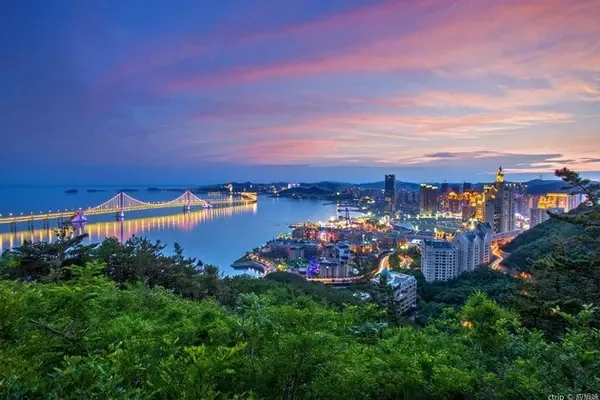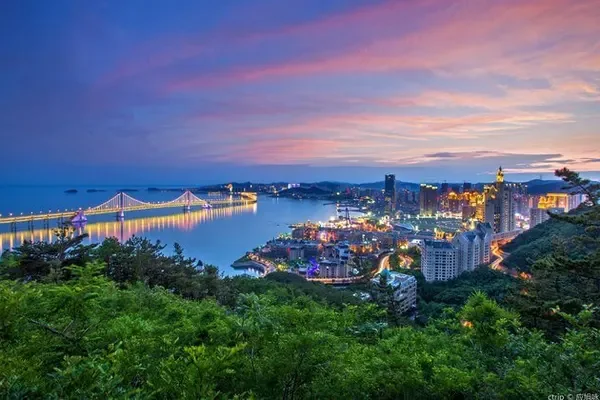The petroglyphs of Mount Helan belong to the national key cultural relics protection unit, and the national AAAA-level tourist attraction is an art gallery of Chinese nomads.
In ancient times, Helan Mountain was the place where the Xiongnu, Xianbei, Turkic, Uighur, Tubo, Dangxiang and other northern minorities lived, lived and multiplied. In the hinterland of Helan Mountain, which is more than 200 kilometers long from north to south, there are more than 20 remains of rock paintings. Among them, the most representative ones are Helankou Rock Paintings.


When it comes to Helan Mountain, it reminds people of the magnificent poem "Manjianghong" written by the national hero Yue Fei: "The anger is soaring, and the rain is resting by the lanai. Look up, look up to the sky and scream, with a strong heart. Thirty years of fame and dust and Earth, eight thousand miles of road, cloud and moon. Don't wait for nothing, the boy's head is white, empty and sad. The shame of Jingkang is still not snowed; Laughing and talking about drinking the blood of the Xiongnu thirsty. Waiting to start over, clean up the old mountains and rivers, and face the sky."


Yinchuan World Rock Art Museum

After entering the scenic spot, the first thing to visit is the "Yinchuan World Rock Art Museum"
The Rock Art Museum is divided into 5 exhibition halls including World Rock Art, Chinese Rock Art, and Helan Mountain Rock Art. A total of 547 representative rock art catalogs, rubbings, photos, real objects and replicas have been selected from all over the world. These exhibits focus on the wonderful content of more than 200 petroglyphs from 30 countries around the world. There are also introductions to the world and China's famous rock art experts and their research results. The museum highlights the important position of Helan Mountain petroglyphs in the world's rock paintings, and reveals ancient human nature worship, reproductive worship, totem worship, ancestor worship and other cultures Connotation.








Leaving the Rock Art Museum, take a scenic battery car to Helan Mountain Pass. The mountain here is high and steep, with an altitude of 1448 meters, commonly known as "Huaokou". The scenery of the mountain pass is elegant, with strange peaks and barriers, and gurgling springs flowing out of the ditch. There are more than a thousand petroglyphs with individual graphics distributed on the rock walls of the mountain stretching for more than 600 meters on both sides of the valley. The art form of the picture is rough and vigorous, the composition is simple, the posture is natural, and the realism is strong. Portraits of people accounted for more than half of the total. Followed by cattle, horses, donkeys, deer, birds, wolves and other animal graphics.
The composition of animal graphics is rough, vivid and lifelike. There are running deer, blue sheep with protruding horns, galloping horses, dogs wagging their tails, figures of flying birds and beasts, pictures of some human hands and the sun, and scenes of primitive religious activities .

The portraits of people are simple and strange. Some heads have horns, some have feathers, and some wear pointed or round caps. The petroglyphs depicting women, some wearing headdresses, and some wearing hair buns, are elegant and elegant, reproducing the ancient women's pursuit of beauty thousands of years ago. Some have big ears, high noses and hairy faces, some have bones in their mouths, and some have striped or curved lines on their faces. There are also several facial features resembling a standing human figure with bent arms, legs spread apart, and a long knife at the waist, showing the image of a totem witch.


The most representative rock painting in Helankou is "Sun God". This petroglyph of the Sun God is a masterpiece among the petroglyphs of Helan Mountain. It is carved on the stone wall more than 40 meters above the ground. It looks mighty. This is the "Sun God" in the minds of ancient nomads.

In ancient times, people attributed the bountiful harvest of livestock and the luxuriance of aquatic plants to the gift of heaven; while bad times and lack of food and clothing were considered to be punishments from heaven for human beings.
The sun is high above the celestial bodies and dominates all things, so people especially believe in the sun, so they personify the sun and portray it as the rock painting, expressing their worship of the sun.
Another possibility is that these are the head portraits of ancient tribal leaders. Some leaders who have contributed to clans and tribes are often engraved on stone walls and become objects of worship and sacrifice.

On this mountain wall, human faces are engraved from top to bottom. It is the largest "icon wall" in Helankou. There are nearly 60 human faces and more than 30 animals and symbols, and the graphics are very clear. The facial features within the contour lines of these two human faces form a human image, which is the product of reproductive worship.
Ancient people worshiped reproductive witchcraft very much, which was the need for people to transform nature, pray for the reproduction of human beings, and the reproduction of animals and plants. The ups and downs of life experience made them realize that there is a supernatural "power" in the dark that makes things difficult for them, and this is the soul of their ancestors.
The soul is mainly concentrated in the head. In order to realize the reproduction of the population and the flourishing of animals and plants, they have to "cater" and "pacify" this soul.


According to the analysis of rock painting graphics and Xixia inscriptions, Helankou rock paintings were engraved in different periods, most of which were made by northern nomads in the Spring and Autumn and Warring States periods, and there are also portraits of other dynasties and Xixia periods. There are two engraving methods: chiseling and grinding: the chiseling trace is clear and shallow; the grinding method is to chisel first and then grind, with thicker and deeper lines and smooth grooves. The themes, content and expression techniques of Helankou rock paintings are very extensive and full of imagination, giving people a feeling of truth, kindness, solemnity and innocence.

Here you can also see the mountain elves - blue sheep. They are light in stature and nimble in their steps, walking among the jagged rocks like walking on flat ground. The color of blue sheep is a kind of protective color, which is very close to the color of the surrounding rocks. It is really not easy to find them without looking closely.



After visiting the solid rock paintings, you will arrive at the Han Meilin Art Museum at the exit of the scenic spot.
The art museum is divided into three floors, mainly including exhibition hall, interactive area, creation area and tourist service area, etc. It integrates multiple functions such as visit, teaching, exhibition, and leisure. Fine arts such as sculptures and ceramics.






In the distant Stone Age, the ancients left marks on the rocks of Helan Mountain by grinding and chiseling. The ancestors described the images of people, animals, hunting, sacrifices and gods with simple, vigorous and general brushstrokes. These rock paintings are not particular. Painting skills and brushwork rely on natural feelings to create works that give people a strong impact and shock, thus generating huge spiritual power.

When traveling in Ningxia, I recommend the direct train to Ningxia tourist attractions. The staff all wear yellow vests, and the minions are hospitable and hospitable. There are two tourist distribution centers in the new city railway station and Crescent Square in the old city, where you can stay nearby Convenient, there are many hotels, and the transportation is convenient. It is not far from the civil aviation bus, and it is very convenient whether it is by train or plane. The one-way fare for the direct train from the scenic spot to the Xixia Royal Tomb, Zhenbeibao Film and Television City, Helanshan Rock Paintings, and Shuidonggou is 15 yuan per person, and the one-way fare to Shahu and Huangsha Ancient Ferry is 20 yuan, which is more affordable and convenient .
![Ningxia [Helan Mountain Rock Paintings] | Art Gallery of Chinese Nomads](https://www.anyonetrip.com/uploads/202302/04/6cd2e8077bc8a92a.webp)

